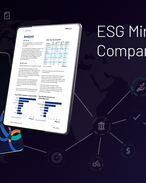The market also needed to realise how the policy’s domestic impacts on Chinese production would benefit Australian producers – though this was alluded to by ANZ Research earlier this week.
Peabody chairman and CEO Gregory H Boyce said he expected global announcements of metallurgical coal supply reductions continue to build, and the company had seen a sharp increase in Indian thermal coal imports in recent months.
Meanwhile in the US, he said Peabody was encouraged by recent Southern Powder River Basin coal supply agreements that were being signed well above those of published indices, as customers end the summer with stockpiles at their lowest levels in nine years.
Regarding global coal, Peabody echoed other Australian producers’ belief that Chinese policies regarding thermal coal qualities were likely to benefit Australian coal exports due to Australia's superior coal qualities.
Peabody expects China's recent policy to have no negative impact on its coal export volumes, based on current information, with the most restrictive aspects appearing to apply to a limited number of coal users that lack emissions controls.
In fact, the policies are likely to reduce China's domestic coal supplies, which could lead to greater imports of higher-quality thermal coals. Thus, Peabody applauded China's continuing actions to address emissions by greatly increasing demand for coal within power plants with control technologies, while reducing coal for use in direct applications that are emissions intensive.
“In India, thermal coal imports are rising faster than expected,” Peabody said.
“More than half of India's power plants report less than seven days of coal supply, leading to increases in India coal imports in both July and August over prior-year levels. Domestic supplies remain challenged, and the new government has expressed continued interest in advancing policies to drive far greater electricity access.”
Regarding metallurgical coal fundamentals, Peabody said it was encouraged by recent China stimulus measures and steel production. Following a weaker August, early September China steel production was up more than 7%; while announced global metallurgical coal supply reductions were continuing.
Peabody has raised its estimate of industry supply reductions: about 25 to 30 million tons of metallurgical coal reductions have been announced in 2014, representing nearly 10% of the seaborne supply.
“Metallurgical coal fundamentals are expected to improve as the majority of these announced reductions would be realised over the next two quarters,” Peabody said.
In the US, Peabody expects its third quarter Powder River Basin shipments will be above second quarter levels on improving rail performance.
“Monthly shipments improved throughout the summer and are benefiting from greater investments by carriers. Powder River Basin demand remains strong as it is competitively advantaged to natural gas generation at gas prices above $US2.50 ($A2.78) to $2.75/MMbtu, and improving rail performance is expected to result in higher Powder River Basin demand in 2015.
“Peabody anticipates 2015 Powder River Basin revenues per tonne to be higher than 2014 realisations due to strong contracting strategies built on layering in sales at attractive price levels.
“Based on recent transactions, Peabody is now signing Powder River Basin contracts at materially higher levels than published indices that are not reflective of physical markets.”

























